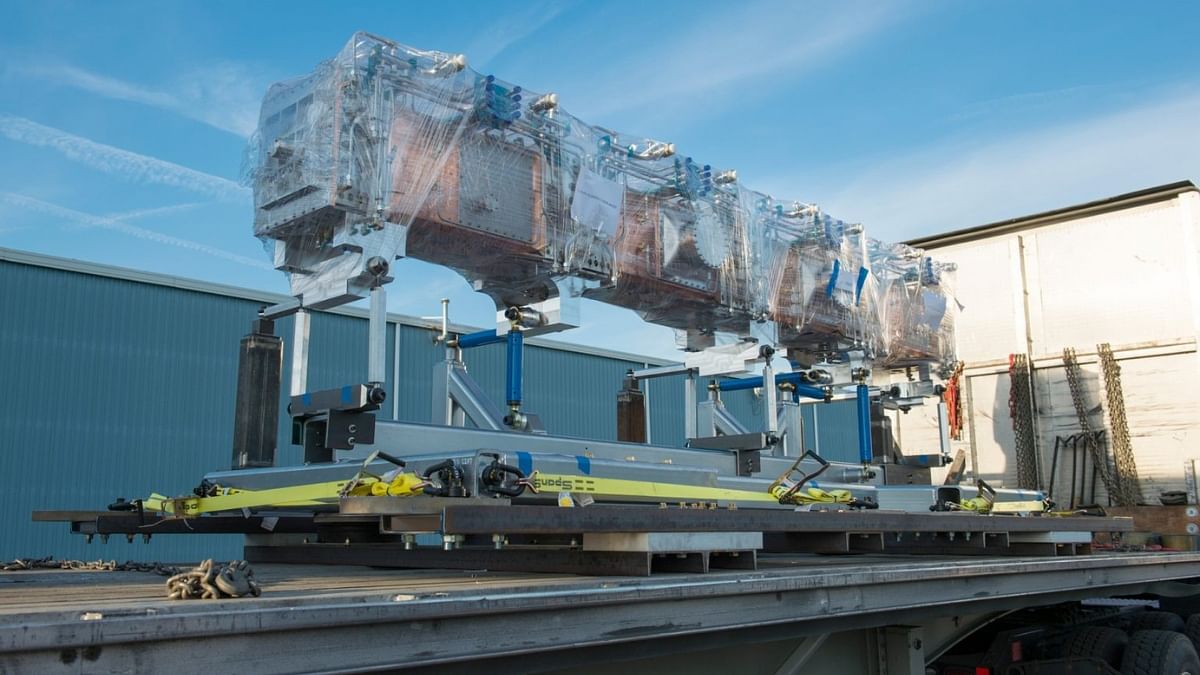Bengaluru: A big takeaway of PM Narendra Modi’s state visit to the US last month was the two countries agreeing to collaborate on large, international physics and astronomy experiments. A joint statement by the two countries outlined these goals and aims.
One of the points reads: “President Biden and Prime Minister Modi hailed our deepening bilateral cooperation on cutting-edge scientific infrastructure, including a $140 million in-kind contribution from the Indian Department of Atomic Energy (DAE) to the U.S. Department of Energy’s (DOE’s) Fermi National Laboratory toward collaborative development of the Proton Improvement Plan-II Accelerator, for the Long Baseline Neutrino Facility — the first and largest international research facility on U.S. soil.”
The Proton Improvement Plan-II Accelerator, or PIP-II, is a particle accelerator enhancement being made to the Fermilab accelerator complex. It is expected to power the Deep Underground Neutrino Experiment (DUNE) in the US, which covers a distance of 1,300 kilometers, and accelerate high-energy neutrino beams. Much like a flashlight beam, a neutrino beam spreads out as it travels.
The high-power proton beams from PIP-II will also help in muon research and search for other newer exotic particles, at some of the smallest and highest precision measurements ever made.
PIP-II uses superconducting radio frequency technology which releases protons travelling nearly at the speed of light. It is expected to accelerate high energy neutrinos into the DUNE accelerator underground. The accelerator will be the length of two football fields, and is expected to be completed in 2028.
PIP-II is a large collaborative project and the first in the US to be built with significant contributions from international partner countries. Researchers from India, Italy, Poland, France, UK, and US will make up the teams working on the project. The Fermilab itself is a national laboratory that is funded by the Department of Energy, US, that has already helped discover three exotic particles: the tau neutrino, top quark, and bottom quark.
“International partners are contributing to all aspects of the PIP-II project with a strong emphasis on superconducting technologies. Each institution has prior experience developing components for forefront particle accelerators and looks to expand on those capabilities. Each country’s contribution is aligned with their particular areas of expertise and with their national interests. This creates a true win-win situation for everyone involved,” says the official website.
Also read: Built by India & US, a satellite that can ‘map all of Earth in 12 days’ — all about NISAR mission 2024
What does Fermilab do?
Fermilab’s accelerator is one of the most powerful experiments in the world that helps understand the smallest particles ever observed. Quarks and leptons are thought to be the most fundamental (or elementary) particles, but scientists are not sure if there are more. There are also other exotic particles, thousands and millions of times smaller than an atom, that particle accelerators like Fermilab help detect or experiment with.
To detect particles at such small scales, accelerators smash them into each other or into other targets at nearly the speed of light. The process creates newer exotic particles, the details of which can be captured by the particle detectors, even if transient.
The Standard Model is the adopted framework today that explains fundamental particles. So far, we have discovered six leptons, six quarks, four force carriers, and one Higgs boson.
To discover additional particles and the absolute fundamental particles in physics that make up all matter, scientists use particle accelerators and detectors.
The PIP-II will have novel technologies and flexibility to conduct various types of experiment, such as the ability to send high-energy, high-speed proton beams as both streams and pulses. It will also enable multiple experiments to be conducted simultaneously.
The PIP-II, Fermilab, and DUNE will all be hosted by the Long-Baseline Neutrino Facility or LBNF. The LBNF/DUNE is an independent entity within Fermilab.
Scientific collaboration with India
India, under the Department of Energy, will contribute to superconducting research, electromagnets, radio frequency equipment, and other technical components for PIP-II, worth USD $140 million, as noted in the joint US-India statement.
The experience is also expected to aid India’s future particle accelerator programme, the Indian Spallation Neutron Source (ISNS) project
Participating institutions in India are Bhabha Atomic Research Centre (BARC), Mumbai; Inter-University Accelerator Centre (IUAC), New Delhi; Raja Rammana Centre for Advanced Technology (RRCAT), Indore; and Variable Energy Cyclotron Centre (VECC), Kolkata.
(Edited by Smriti Sinha)
Also read: What is geoengineering? US govt open to studying idea that blocking Sun rays could cool Earth

